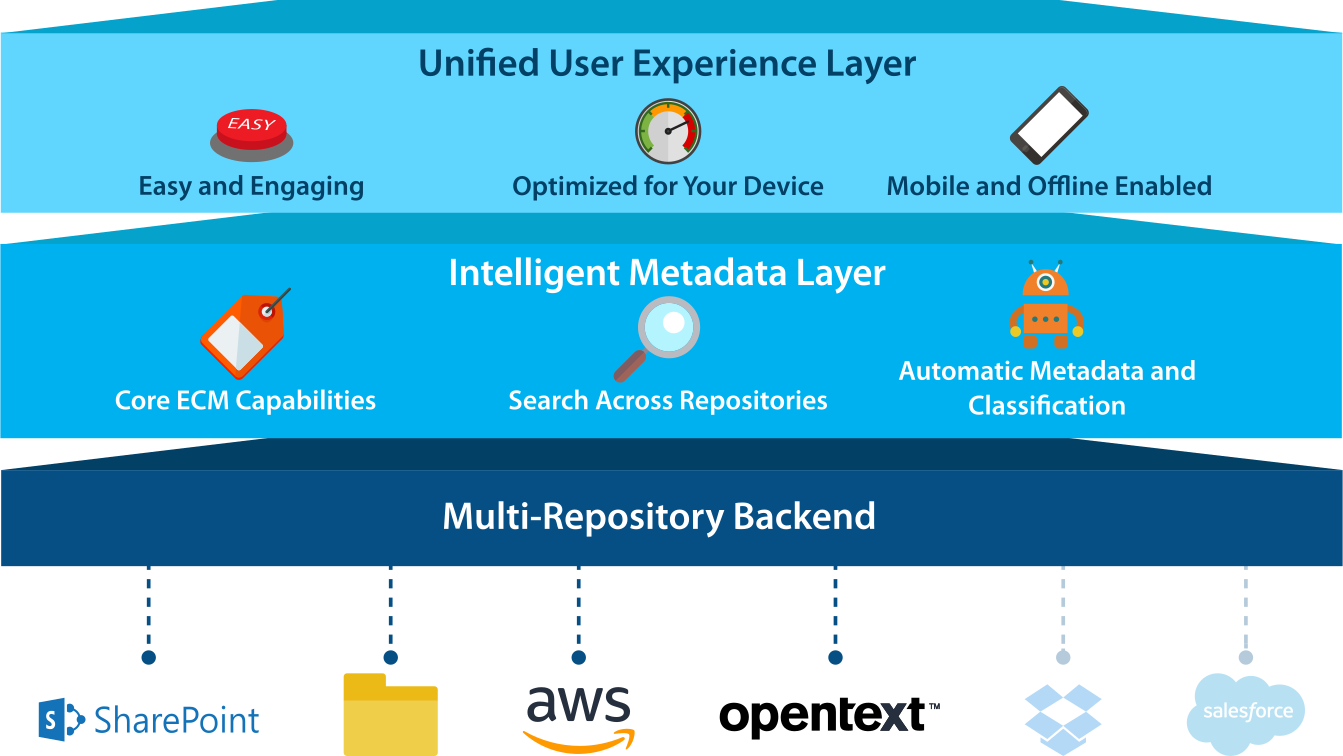Intelligent Metadata Layer
Intelligent Metadata Layer, abbreviated as IML, is a repository-neutral approach to intelligent information management that unifies information across different sources based on context, not on the system or folder in which the information is stored.
IML allows an M-Files user to connect to multiple different external repositories in addition to the traditional M-Files document vaults. By means of special vault applications known as connectors, the user can browse and edit content residing in external sources within the M-Files user interface.
IML provides automatic classification and metadata to your documents with the aid of so-called intelligence services that add a layer of artificial intelligence to M-Files. Intelligence services are vault applications that classify documents for you by determining the class of the document and suggesting metadata values by analyzing file content semantically and visually.
Architecture of IML
The architecture of IML can be divided into three separate layers: the unified user experience layer on the top, the intelligent metadata layer in the middle, and the multi-repository backend at the bottom.

The top layer, the unified user experience layer, serves to offer a unified user experience regardless of the repository in use. It allows information to be viewed and edited with the familiar M-Files Desktop, M-Files Web and M-Files Mobile user interfaces, no matter where the information resides.
The middle layer, also known as Intelligent Metadata Layer, is the central component in the IML architecture. It consists of all the essential enterprise content management capabilities, such as a versatile search interface, workflows, version history, checking out documents for editing, and a multi-repository search. The M-Files approach of classifying documents with metadata and categorizing content into metadata-based views allows documents to be found on the basis of what they are about instead of where they reside. The multi-repository search is the M-Files version of an enterprise search, allowing documents to be searched for across repositories.
The middle layer also adds artificial intelligence into the M-Files system. The so-called intelligence services offer means for automatic metadata suggestions and document classification by performing text and image analytics on content that is added to M-Files, and by applying machine learning on vault user behavior patterns. Intelligence services are vault applications that, when installed, can shoulder the burden of specifying metadata and classifying documents. Additionally, the IML application programming interface allows intelligence services to be developed by third parties so that they can be tailor-made to suit specific needs and environments of diverse organizations and businesses.
For more information on intelligence services, see Intelligence Services.
The bottom layer, the multi-repository backend, acts as an interface between M-Files and external repositories. By means of vault applications known as connectors, M-Files users are able to view and modify content in external repositories by using the M-Files user interface. Connectors establish connections between M-Files and external repositories and allow the user to view and edit content from various different external sources as though the user was operating within a single document vault.
For more information on connectors, see Connectors.
